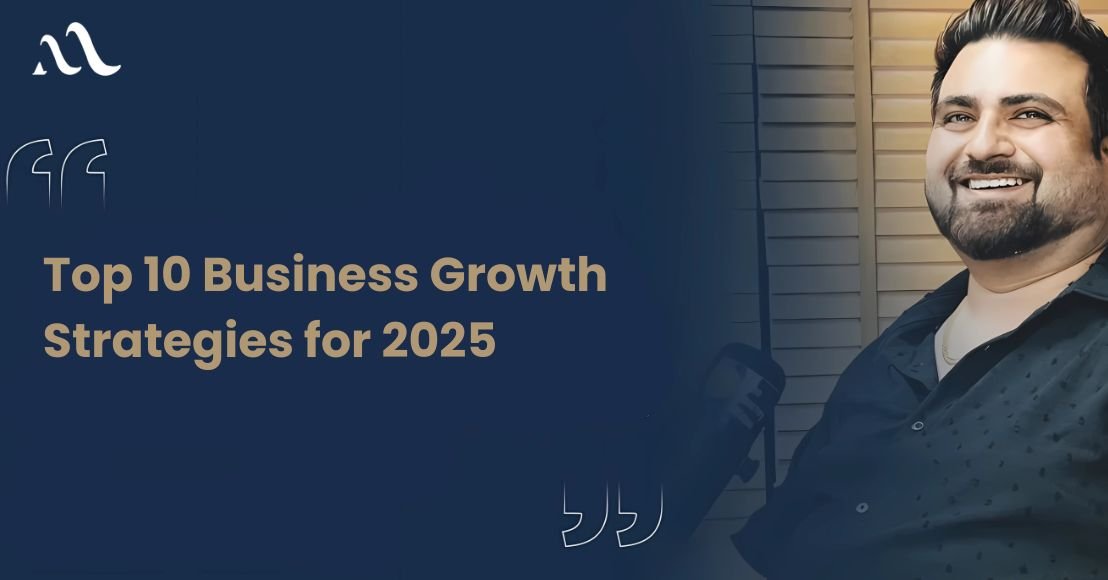In today’s fast-paced, competitive business world, an effective strategy isn’t an option; it’s a requirement. But even the most carefully-crafted business plans may be a bit sloppy if there are inconsistencies within the plan. These gaps could result in inadequate execution and missed opportunities, declining customer satisfaction, or complete failure of the business.
As a business strategy consultant, Ankush Mehta, I have been working with entrepreneurs and businesses who have faced similar difficulties. This guide is designed to aid you in identifying weaknesses in your business and provide actionable steps to correct them. This will ensure that your business remains resilient and ready for the future.
How to identify and eliminate strategy gaps in your business
The strategy gap is the difference between where your business is now and where you want it to be. These gaps can appear in operations, team skills, technology, marketing, or finance. If left unaddressed, they can reduce efficiency, cause missed opportunities, or damage customer satisfaction.
When you identify gaps in your strategy early, you can take targeted action to align your team, improve operations, and achieve your business goals. Closing these gaps will make your business more resilient, competitive, and ready for growth.
Understanding What a Strategy Gap Is
A strategy gap is the difference between your business goals and your current reality, whether in operations, resources, or market presence. In simpler terms, it’s the gap between where your business is now and where you want it to be. Recognizing this distance is the first step toward closing it effectively.
These gaps can show up in many forms, such as:
- Inconsistency between business units and overall goals
- Limited understanding of customer needs
- Ineffective marketing and sales strategies
- Outdated technology or infrastructure
- Organizational inefficiencies
Identifying these gaps early allows you to address them with targeted solutions, align your team with your vision, and strengthen your growth path.

Key areas to check for strategy gaps
- Business vision and goals: Make sure your short-term goals match your long-term vision. Meet with stakeholders to ensure everyone understands the direction of the company.
- Customer feedback and market trends: Analyze customer surveys, reviews, and market trends to determine whether your products or services meet real needs.
- Operational efficiency: Look for bottlenecks, resource gaps, or process delays. Optimize processes using methods such as Lean or Six Sigma.
- Team alignment and skills: Check that employees have the necessary skills and tools. Offer training and support for collaboration between teams.
- Technology and digital tools: Make sure your technology supports your goals. Use automation, CRM, and analytics tools to increase efficiency.
- Financial planning: Check that budgets are aligned with strategic priorities. Monitor ROI and adjust funding to focus on high-impact areas.
- Benchmarking the competition: Compare product features, pricing, and customer experience to identify opportunities and define your USP.
Steps to close strategic gaps
- Conduct a SWOT analysis: Identify strengths, weaknesses, opportunities, and threats to uncover gaps.
- Create an action plan to close the gaps: Prioritize the most important gaps and assign clear goals, responsibilities, milestones, and indicators of success.
- Implement changes incrementally: Focus on one or two priority gaps at a time to achieve better results.
- Review regularly: Conduct quarterly or semi-annual strategy reviews. Stay agile and adjust plans based on market or internal changes.
- Foster a culture of feedback: Encourage continuous improvement and make strategy a living and evolving process.
Step 1: Revisit Your Business Vision and Objectives
To determine what’s not working, must be clear on the goals you’re aiming for. Your vision for your business acts as a compass. Any gap between your vision and your actual performance is a sign of a strategic gap.
What should you do:
- Re-evaluate your objectives and goals for the long term. Is it still pertinent?
- Make sure that your short-term goals are in line with your overall goals.
- Meet with key stakeholders to find out the extent to which your vision is understood and communicated throughout the company.
Step 2: Conduct a SWOT Analysis
The most efficient way to find weaknesses is the SWOT Analysis, which examines your strengths and weaknesses, opportunities, and threats. It will reveal the issues that are affecting your business internally, but also the external factors that could be impacting your performance.
Pro Tip: Engage various groups in your SWOT assessment. The departments of sales, marketing, and customer support usually have unique opinions on the things that are working and what’s not.
Example Insights:
- Strengths: Innovative product features, strong brand loyalty
- Weaknesses: Slow decision-making, limited digital presence
- Opportunities: Growing market demand, untapped demographics
- Threats: New entrants, changing regulations
Step 3: Analyze Customer Feedback and Market Trends
Your customers are the best source of information. If there’s a disconnect between the things you think they’ll need and what they really would like, that’s an enormous difference.
Steps to be taken:
- Perform customer satisfaction surveys as well as survey results and NPS (Net Promoter Score) analysis.
- Monitor sentiment on social media or product critiques.
- Stay informed about market trends, competitors’ strategies, and industry innovations.
Solution Tip: Utilize this data to enhance your value proposition. Make sure that your product or service offerings are close to actual customer expectations.

Step 4: Review Your Operational Efficiency
Sometimes, a sound strategy can fail because the operations behind it are faulty or inefficient. From delays in supply chain operations to communication problems, operational issues can sabotage strategic objectives.
List of Checklists to determine any gaps
- Are you experiencing bottlenecks within your process?
- Are teams equipped with the resources and tools they require?
- Are KPIs being consistently met?
- Do you have any frequent issues with customer support or delivery?
Solution: Implement process optimization strategies like Lean and Six Sigma to eliminate waste and improve performance.
Step 5: Evaluate Team Alignment and Skill Gaps
A plan is only as effective as the team that implements it. If members of the team aren’t balanced or lack the essential abilities, progress could slow and the business objectives could be pushed back. Achieving alignment and closing inefficiencies is crucial to sustain growth.
Watch out for warning signs:
- Engagement of employees is high, but also high turnover
- Mismatch of skills in crucial roles
- Poor collaboration across departments
Strategies to be considered:
- Perform skill gap assessments and provide specific training
- Inspire cross-functional collaboration to increase collaboration
- Utilize OKRs (Objectives as well as Key Results) to ensure that everyone is focused on the top priorities.
In enhancing your team’s capabilities and ensuring that they all share the same goals, You build an excellent foundation for the implementation of the strategy.

Step 6: Audit Your Digital and Technological Infrastructure
Digital transformation isn’t a trendy term; it’s a fundamental element in business success. The outdated or ineffective technology could be a silent threat to the achievement of your strategic goals.
Assess:
- Does your tech stack aid or hinder your work?
- Are there any automation tools that you’re not utilizing?
- What is the quality of data being stored, collected, and used to make decisions?
Solution: Invest in scalable, integrated solutions that are scalable, integrated. This may mean upgrading CRM software or making it easier to automate marketing procedures, or employing AI tools for forecasting and analytics.
Step 7: Financial Analysis and Budget Allocation
The best ideas aren’t worth much without money to support them. A typical strategic issue is when the budget doesn’t match the goals.
How to test:
- Are you spending too much money on areas with low impact?
- Are your strategic growth initiatives not being funded?
- Are your financial KPIs being met?
Solution: Re-allocate the funds according to the ROI as well as strategic importance. Create flexible budgets that permit you to change your plans as necessary.
Step 8: Benchmark Against Competitors
If your competition is expanding and you’re not, chances are you’re not doing something right.
Conduct:
- Competitive benchmarking across product features, pricing, marketing channels, customer experience, etc.
- Market positioning analysis: where do you rank in the eyes of your target audience?
Correction: Use information to define your unique selling point (USP) and alter your marketing strategy accordingly.

Step 9: Create a Gap-Closing Action Plan
When the issues are identified after identifying the gaps, the next step is to execute. One common mistake is trying to address all the issues at once. Prioritize the most important areas and work on them in a systematic manner.
The action plans you create should contain:
- Clear objectives
- Timingline, milestones, and other information
- Assigned responsibilities
- measurable success indicators
Review progress regularly and modify the plan if needed. Flexibility is essential in an ever-dynamic business environment.
Step 10: Make Strategy Review a Continuous Process
Many businesses treat strategy as a “set-it-and-forget-it” exercise. This approach is no longer relevant. Strategic gaps may develop in the course of time as markets change, technology shifts, and customer preferences alter.
Best Practices:
- Conduct biannually or quarterly strategic reviews
- Be agile and open to market signals
- Create a culture that is based on feedback and continual improvement
Final Thoughts
Every business, whether a start-up or a reputable brand, will face strategic challenges at various stages. The crucial to achieving long-term success lies in identifying and addressing gaps consistently and dealing with them with clarity, concentration, and flexibility.
In the words of Ankush Mehta’s book, a business plan cannot be a static piece of paper but an evolving framework. It changes as your business grows and as the marketplace changes. By being active, data-driven and adaptable, you can ensure that your strategy is not just relevant, but effective enough to sustain growth.
FAQs
1. What is a strategy gap in business?
A strategy gap is the difference between your current business performance and your goals that affects operations, marketing, or team effectiveness.
2. How can I identify gaps in the strategy?
Use SWOT analysis, customer feedback, operational reviews, team assessments, and competitive benchmarking.
3. Why is it important to close the gaps in the strategy?
Eliminating gaps increases efficiency, increases customer satisfaction, unifies teams, and promotes business growth.
4. How can customer feedback help identify gaps?
Feedback shows where your products or services fall short and highlights opportunities to add value.
5. What role does team alignment play in closing strategy gaps?
Aligned teams with the right skills better execute strategies and contribute to business goals.
6. How can technology reduce strategy gaps?
Effective technology tools increase efficiency, automate processes, and provide data-driven insights for better decision-making.
7. What financial steps can help fill the gaps in the strategy?
Analyze budgets, track ROI, and allocate resources to high-impact projects that support strategic goals.
8. How often should I review my trading strategy?
Quarterly or semi-annual reviews help identify emerging gaps and adjust plans for changing market conditions.
9. How can competitive benchmarking help my business?
It uncovers opportunities, shows industry trends, and helps improve your Unique Selling Proposition (USP).
10. What is the best way to implement a plan to close the gaps?
Prioritize high-impact gaps, assign responsibilities, set milestones, and regularly monitor progress while remaining flexible.







